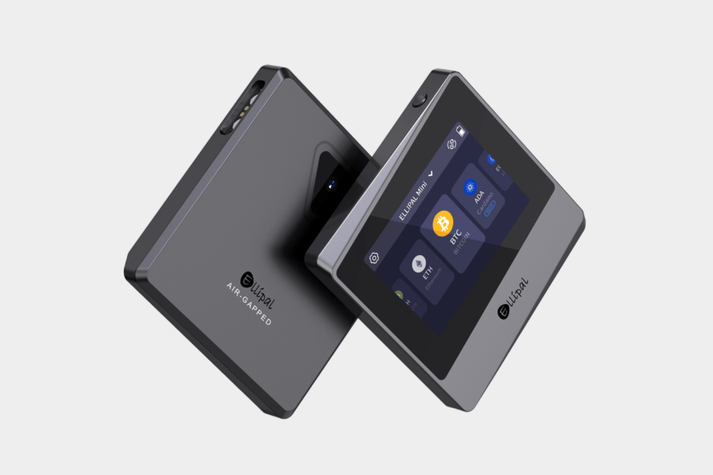Unlock Your Crypto's Full Potential: The Ultimate Guide to Choosing the Perfect Hardware Wallet!
Unlock Your Crypto's Full Potential: The Ultimate Guide to Choosing the Perfect Hardware Wallet!
As the world of cryptocurrency continues to expand, understanding how to securely store your digital assets becomes increasingly vital. Crypto wallets serve as the cornerstone of this security, acting as the digital vaults for your cryptocurrencies. Among the various wallet options available, hardware wallets stand out as the preferred choice for many due to their robust security features and user-friendly interface. In this guide, we will delve into what hardware wallets are, their key features, and provide you with insights on how to compare and select the perfect one for your needs. Whether you are a seasoned investor or a newcomer to the crypto space, this comprehensive guide will equip you with all the necessary knowledge to make an informed decision.
Understanding Hardware Wallets
Hardware wallets are physical devices designed to securely store your cryptocurrency offline. Unlike software wallets that are connected to the internet, hardware wallets offer an added layer of security by keeping your private keys stored in a secure chip. This isolation from online threats significantly reduces the risk of hacking and theft, making hardware wallets a preferred option for serious investors. One of the standout features is their ability to store multiple cryptocurrencies securely, which is essential for those diversifying their portfolios. Additionally, many hardware wallets come with built-in security protocols, such as two-factor authentication and encryption, further safeguarding your assets from unauthorized access. Personal experiences from friends who have transitioned from software to hardware wallets echo this sentiment; they report peace of mind knowing their assets are stored securely offline.
Key Features to Consider When Choosing a Hardware Wallet
When it comes to choosing a hardware wallet, several key features should be at the forefront of your decision-making process. First and foremost is the security protocols—look for wallets that offer robust encryption, PIN protection, and recovery seed functionalities. The user interface is another essential aspect; a wallet that is intuitive and easy to navigate can make a significant difference in your overall experience. Compatibility with various cryptocurrencies is also necessary, especially if you plan to hold a diverse range of assets. Backup options are critical; ensure the wallet allows you to back up your data securely in case of device loss. Lastly, consider the quality of customer support offered; having access to helpful resources or direct assistance can be invaluable when dealing with technical issues. One of my friends found herself in a tricky situation when her wallet malfunctioned, and she was grateful for the responsive customer support that assisted her in recovering her assets.
Comparing Popular Hardware Wallets
While many hardware wallets are available on the market, comparing them based on specific features can help narrow down your options. Some wallets excel in security features, boasting advanced encryption and biometric authentication, while others focus on user experience with sleek designs and mobile app integrations. For instance, some wallets offer extensive compatibility with a wide array of cryptocurrencies, making them ideal for users with varied investments. Conversely, others may restrict access to fewer currencies but provide superior security measures. Strengths to consider include the ease of use, community reputation, and customer support responsiveness, while weaknesses may involve a lack of certain features or higher vulnerability to physical damage. Reflecting on a friend's experience, they had to choose between a wallet with excellent security features but a complicated interface versus a user-friendly option that lacked some advanced security measures. Ultimately, their decision was influenced by their comfort with technology and personal security preferences.
How to Set Up and Use Your Hardware Wallet
Setting up a hardware wallet is a straightforward process, but it is crucial to follow each step carefully to ensure your assets remain secure. Begin by unboxing your device and connecting it to your computer or mobile device. Most wallets will guide you through the initial setup, which often includes creating a secure PIN and generating a recovery seed—a crucial step for recovering your wallet if lost. During this setup, ensure your recovery seed is written down securely and stored in a safe place; never share it with anyone. Once your wallet is set up, transferring cryptocurrencies is typically as simple as connecting the wallet and following the prompts to send or receive funds. To maintain security, always ensure that your wallet's firmware is up to date and be cautious of phishing attempts that may seek to compromise your wallet. A friend of mine had a scare when they almost fell victim to a phishing email, but thanks to their vigilance and secure practices, they managed to avoid a costly mistake.
Choosing the Right Hardware Wallet for Your Needs
Choosing the right hardware wallet is a critical step in effectively securing your cryptocurrency assets. Throughout this guide, we've explored the importance of understanding what hardware wallets are, the key features to consider, a comparison of options available, and the setup process. Each aspect plays a significant role in ensuring your digital assets are protected against potential threats. As you navigate the decision-making process, consider your individual needs, preferences, and comfort with technology. Ultimately, the right hardware wallet will provide you with peace of mind, knowing that your investments are secure and accessible whenever you need them.
